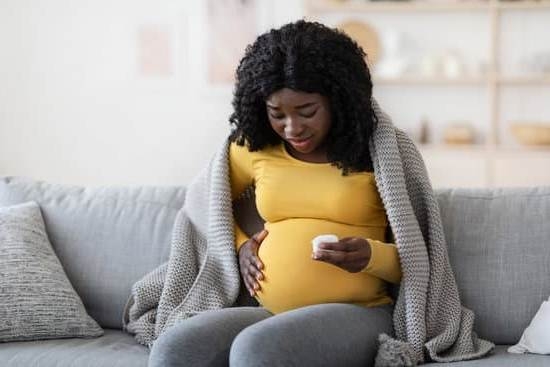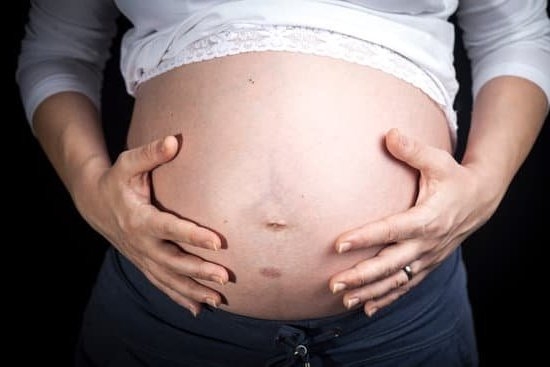Are you experiencing cramps and wondering if they could be a sign of early pregnancy? It’s important to understand the difference between period cramps and early pregnancy cramps. Many women may confuse the two, but there are distinct characteristics that can help differentiate between the two. In this article, we will explore the symptoms, timing, physical differences, emotional impact, and management of both types of cramps.
Period cramps vs early pregnancy cramps is a common dilemma for many women. Period cramps, also known as dysmenorrhea, are a common symptom of menstruation, while early pregnancy cramps can be a sign of implantation and hormonal changes in the body. Understanding the key differences between these two types of cramps can help provide clarity and peace of mind for many women who may be uncertain about their symptoms.
In this comprehensive guide, we will delve into the symptoms, intensity, timing, and physical differences between period cramps and early pregnancy cramps. We will also explore how these cramps can affect your emotional and psychological state and provide tips for managing and seeking medical advice for both types of cramps. By the end of this article, you will have a clearer understanding of how to differentiate between period cramps and early pregnancy cramps and how to manage them effectively.
Understanding Period Cramps
When it comes to understanding the difference between period cramps and early pregnancy cramps, it’s important to first recognize the symptoms, intensity, and timing of each. Period cramps, also known as dysmenorrhea, are commonly experienced by women during menstruation. These cramps typically occur in the lower abdomen and can vary in intensity from mild to severe. They often start just before or at the onset of menstrual bleeding and may last for a few days.
Symptoms of period cramps may include:
- Dull, throbbing pain in the lower abdomen
- Pain that radiates to the lower back and thighs
- Headaches
- Nausea
The intensity of period cramps can vary from one individual to another, with some experiencing mild discomfort while others may be incapacitated by severe pain. The timing of period cramps is usually predictable, occurring around the same time each month corresponding with the menstrual cycle.
In contrast, early pregnancy cramps can also present with similar symptoms but have distinct differences. These cramps may feel similar to period cramps but are usually milder and shorter in duration. They can occur on one side or both sides of the abdomen and may be accompanied by light spotting or implantation bleeding.
It’s important for women who are experiencing these symptoms to take a pregnancy test to confirm whether they are pregnant or not. This differentiation between period cramps vs early pregnancy cramps is crucial for women who are trying to conceive or are concerned about a potential pregnancy.
Overall, understanding the symptoms, intensity, and timing of both types of cramping is essential for individuals to properly identify their cause and seek appropriate medical advice if necessary. Knowing when these cramps could potentially indicate something other than normal menstruation is crucial for overall health and well-being.
Early Pregnancy Cramps
During the early stages of pregnancy, many women experience cramping that can be mistaken for period cramps. It is important to understand the differences between the two in order to accurately identify and address any potential concerns. Here, we will explore the key factors that differentiate early pregnancy cramps from period cramps, including timing and specific symptoms.
One of the primary differences between period cramps and early pregnancy cramps is the timing in which they occur. Period cramps typically occur just before or during menstruation, while early pregnancy cramps may occur around the time of implantation, which is typically one to two weeks after conception. Understanding this timing can help women determine the likelihood of being pregnant based on when they are experiencing these cramps.
In terms of symptoms, period cramps and early pregnancy cramps also have some distinguishing factors. While both may involve abdominal discomfort, early pregnancy cramps are often milder and more intermittent compared to the consistent and intense pain associated with period cramps. Additionally, early pregnancy cramps may be accompanied by light spotting or bleeding, which is not typical during menstruation.
It is important for women to pay close attention to their bodies and be aware of these differences in order to accurately assess whether they may be experiencing period cramps or early pregnancy cramps. If there is uncertainty, it is advisable to take a home pregnancy test or consult a healthcare professional for further guidance. Ultimately, understanding these distinctions can help individuals make informed decisions regarding their reproductive health.
Physical Differences
When it comes to understanding the difference between period cramps and early pregnancy cramps, one of the key factors to consider is the physical differences in the location and sensation of the cramps. Knowing how to differentiate between the two can be helpful for individuals who are trying to conceive or who may be unsure about their pregnancy status.
Location of Cramps
Period cramps typically occur in the lower abdomen, while some women may feel them in their lower back as well. The pain is often described as a dull, aching sensation that comes and goes over the course of several days.
On the other hand, early pregnancy cramps are usually felt in the lower abdomen and may be milder than period cramps. Some women also report feeling mild cramping on one side of their abdomen, known as implantation cramping, which occurs when the fertilized egg attaches itself to the uterine lining.
Sensation of Cramps
In terms of sensation, period cramps are often more intense and can be accompanied by other symptoms such as bloating, nausea, and diarrhea. These cramps tend to peak just before or during menstruation and then gradually improve as the period progresses. In contrast, early pregnancy cramps are usually described as milder and less persistent than period cramps. They may feel like mild pressure or discomfort in the lower abdomen and can come and go without a specific pattern.
By paying attention to these physical differences in the location and sensation of cramps, individuals can better discern whether they are experiencing period cramps or early pregnancy cramps, leading to informed decisions about seeking medical advice or managing their symptoms.
Emotional and Psychological Impact
Period Cramps and Emotional Wellbeing
For many individuals, period cramps can have a significant impact on their mental and emotional wellbeing. The discomfort and pain experienced during menstruation can lead to feelings of irritability, mood swings, anxiety, and even depression. The disruption in daily activities due to the pain can also lead to frustration and stress. Furthermore, the hormonal changes that occur during the menstrual cycle can exacerbate these emotional symptoms.
Early Pregnancy Cramps and Emotional Wellbeing
Experiencing cramps during early pregnancy can also affect an individual’s mental and emotional state. While the anticipation of becoming a parent may bring about feelings of joy and excitement, pregnancy cramps can also cause anxiety and worry. For some individuals, the fear of miscarriage or complications can lead to heightened emotions and stress. The uncertainty surrounding early pregnancy cramps can also contribute to feelings of nervousness.
Managing Emotional Impact
It is important for individuals experiencing period cramps or early pregnancy cramps to address their emotional wellbeing as well. This may involve practicing self-care techniques such as meditation, deep breathing exercises, or engaging in activities that bring comfort and relaxation. Seeking support from friends, family, or a mental health professional can also provide valuable emotional support during this time.
Overall, understanding the emotional impact of both period cramps and early pregnancy cramps is crucial in effectively managing these physical symptoms. It is essential for individuals to prioritize their mental wellbeing while addressing the physical discomfort associated with cramping.
Seeking Medical Advice
It is important to recognize when cramps may be indicative of a larger health issue and when it is necessary to seek medical advice. When it comes to differentiating between period cramps vs early pregnancy cramps, consulting a healthcare professional can provide the guidance and reassurance needed. If you are experiencing severe or unusual cramping, it is best to consult with a doctor to rule out any potential complications.
For those who are unsure about whether their symptoms are related to their menstrual cycle or possible pregnancy, seeking medical advice is imperative. A healthcare professional can administer tests and examinations that can provide clarity on the cause of the cramps. Additionally, if you have been trying to conceive or suspect that you may be pregnant, it is important to consult with a doctor if you experience any abnormal cramping.
Furthermore, if your period cramps or early pregnancy cramps are accompanied by symptoms such as unusually heavy bleeding, fever, dizziness, or fainting, seeking immediate medical attention is crucial. These could be signs of a more serious condition that requires prompt evaluation and treatment.
| When to Seek Medical Advice | Reasons |
|---|---|
| Experiencing severe or unusual cramping | To rule out potential complications |
| Uncertain about symptoms related to menstrual cycle or pregnancy | To administer tests for clarity on the cause of the cramps |
| Accompanied by unusually heavy bleeding, fever, dizziness, or fainting | Prompt evaluation and treatment may be required |
Management and Relief
Managing and finding relief from period cramps and early pregnancy cramps is important for the overall well-being of women during menstruation or early stages of pregnancy. It is crucial to understand the difference in symptoms and sensations to properly address and manage the discomfort experienced. Here are some helpful tips for managing period cramps versus early pregnancy cramps.
When dealing with period cramps, over-the-counter pain relievers such as ibuprofen or naproxen can provide relief from the pain and discomfort. Additionally, applying heat to the lower abdomen through a heating pad or warm bath can help relax the muscles and alleviate cramping. Engaging in light exercise, such as walking or yoga, may also help reduce the severity of period cramps.
On the other hand, when experiencing early pregnancy cramps, it is essential to communicate any concerns with a healthcare professional. While some mild cramping can be normal in early pregnancy as the uterus expands, severe or persistent cramping could indicate a potential issue that requires medical attention. Gentle stretching exercises and prenatal yoga may also help relieve mild early pregnancy cramps.
Furthermore, maintaining a healthy diet, staying hydrated, and getting an adequate amount of rest are beneficial for managing both period and early pregnancy cramps. Taking care of one’s emotional well-being through relaxation techniques like deep breathing exercises or meditation can also provide relief from the discomfort associated with both types of cramps.
| Management Tips | Period Cramps | Early Pregnancy Cramps |
|---|---|---|
| Use of Pain Relievers | ✔️ | ❌ (Consult healthcare professional) |
| Application of Heat | ✔️ | ✔️ (Mild cases only) |
| Lifestyle Changes (e.g. diet, exercise) | ✔️ | ✔️ |
Conclusion
In conclusion, it is important to understand the key differences between period cramps and early pregnancy cramps in order to properly address any discomfort or concerns. Period cramps, also known as dysmenorrhea, typically occur during menstruation and are characterized by symptoms such as lower abdominal pain, back pain, and in some cases, headaches and nausea. These cramps are caused by the contractions of the uterus as it sheds its lining.
On the other hand, early pregnancy cramps can sometimes be mistaken for period cramps but are usually milder and occur due to the implantation of the fertilized egg in the uterine lining. Symptoms of early pregnancy cramps may also include light spotting or bleeding, breast tenderness, and fatigue. It is important to recognize these differences and seek medical advice if there are any doubts or concerns about the nature of the cramps.
When it comes to managing period cramps or early pregnancy cramps, there are various methods that can provide relief such as over-the-counter pain medications, heating pads, gentle exercise, and relaxation techniques. However, it is crucial to consult with a healthcare professional if the cramps are severe or accompanied by unusual symptoms. By understanding these differences and taking appropriate measures, individuals can effectively cope with and address period cramps vs early pregnancy cramps.
Frequently Asked Questions
How Do You Know if Cramps Are Period or Pregnancy?
It can be challenging to differentiate between period cramps and pregnancy cramps, as both can feel similar. Period cramps typically occur right before or during your period, while pregnancy cramps may feel milder and occur due to implantation of the fertilized egg.
What Do Earliest Pregnancy Cramps Feel Like?
The earliest pregnancy cramps may feel like mild discomfort or twinges in the lower abdomen. Some women describe it as similar to premenstrual cramps but milder. It’s essential to remember that every woman’s experience may vary.
Am I Pregnant or Just Starting My Period?
Determining whether you are pregnant or just starting your period can be confusing, especially if you experience symptoms like cramping, bloating, and mood swings in both cases. Taking a pregnancy test or consulting with a healthcare provider is the best way to confirm a pregnancy and rule out other factors.

Welcome to my fertility blog. This is a space where I will be sharing my experiences as I navigate through the world of fertility treatments, as well as provide information and resources about fertility and pregnancy.





